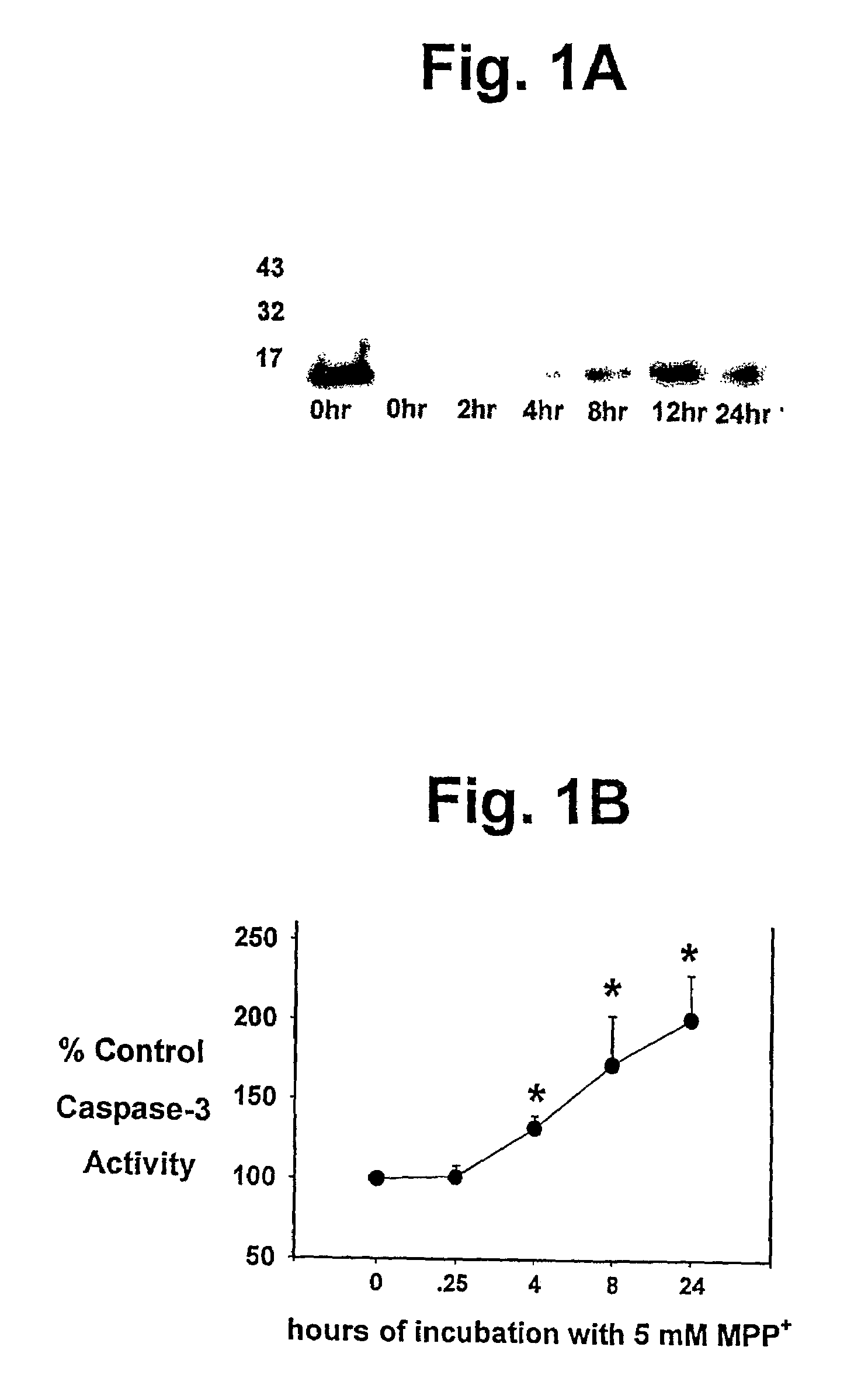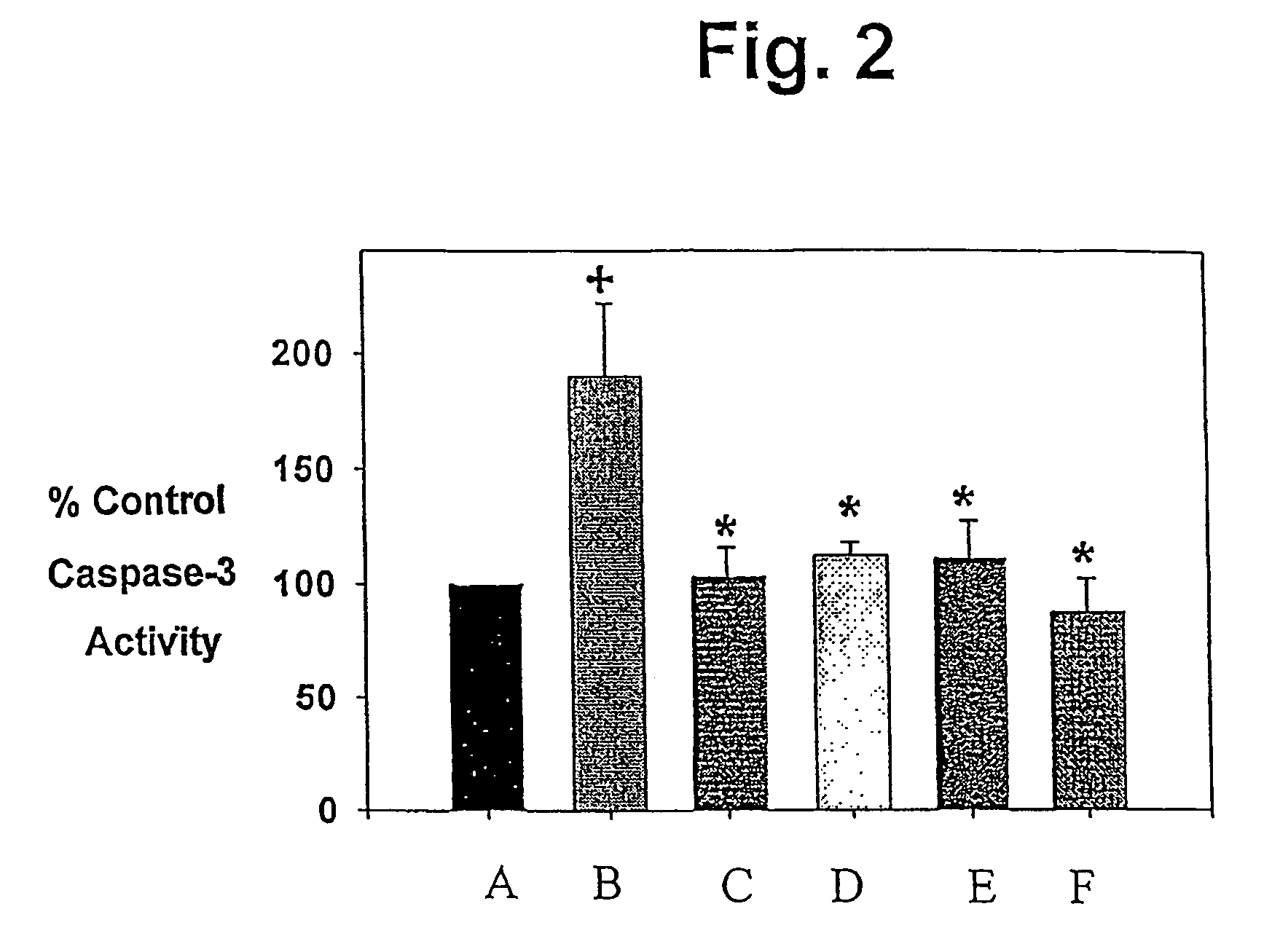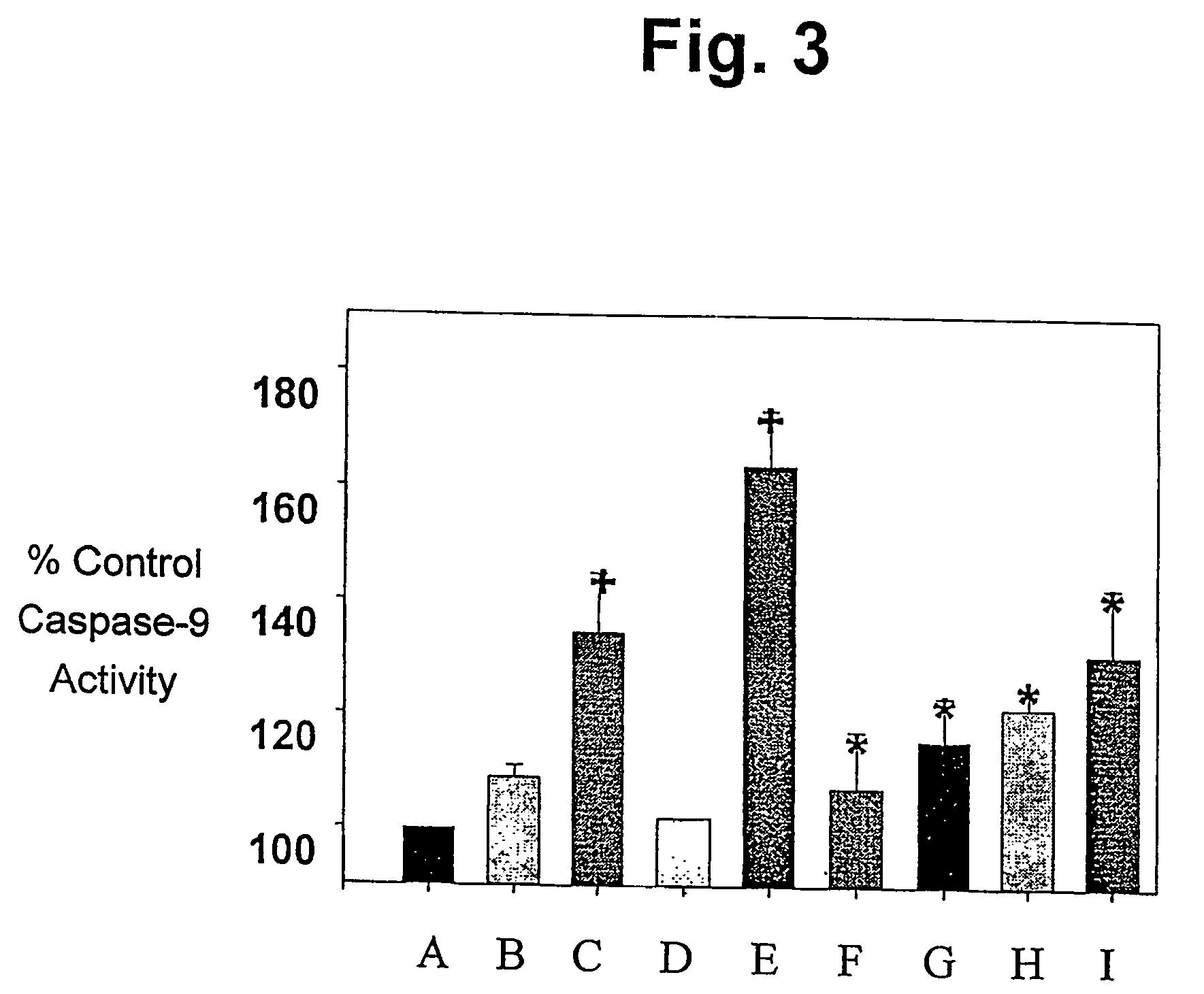Use of pramipexole to treat amyotrophic lateral sclerosis
a technology of amyotrophic lateral sclerosis and pramipexole, which is applied in the direction of biocide, anti-noxious agents, drug compositions, etc., can solve the problems of oxidative stress, excessive generation of damage, and the relevance of pathogenesis in these autosomal genetic variants to the more commonly occurring sporadic forms, etc., to prevent and/or delay symptoms, the effect of alleviating symptoms
- Summary
- Abstract
- Description
- Claims
- Application Information
AI Technical Summary
Benefits of technology
Problems solved by technology
Method used
Image
Examples
example 1
R(+) and S(−) PPX are Effective Inhibitors of Activation of Cell Death Cascades.
Materials and Methods
[0065]Cell culture
[0066]SH-SY5Y human neuroblastoma cells were obtained from the American Tissue Culture Collection (www.atcc.org) and maintained in culture in a replicating state. For caspase assays and cytochrome C release studies they were grown in T75 flasks with DMEM / high glucose containing 10% fetal bovine serum, antibiotic / antimicotic (100 IU / ml of penicillin, 100 μg / ml of streptomycin sulfate, 0.25 μg / ml of amphotericin B) and 50 μg / ml of uridine and 100 μg / ml of pyruvate in a 5% CO2 atmosphere at 37° C. to approximately full confluence (2×107 cell / flask). They were then incubated with 5 mM methylpyridinium iodide (MPP+; Sigma; www.sigma-aldrich.com) or 100 μM 25–35 or 35–25 beta amyioid peptides (Bachem; www.bachem.com) for varying times, then harvested. For cell death studies, the cells were plated into 96 well black-bottom plates and grown for 24 hours in DMEM media before...
example 2
Use of Pramipexole to Treat ALS
[0085]Oxidative abnormalities have been identified both in familial amyotrophic lateral sclerosis (FALS) and the more prevalent sporadic ALS (SALS). 2,3-DHBA is a hydroxylated salicylate byproduct that has been shown to be a reliable in vivo marker of increased free radical activity and is reliably assayed by HPLC. Following the administration of an oral salicylate load, elevated serum levels of 2, 3-dihydroxybenzoic acid (2,3-DHBA) and DHBA / salicylate were observed in SALS subjects. As described herein 12 SALS patients were studied to determine the levels of 2,3-DHBA both before and after treatment with pramipexole.
Methods
Participant Preparation
[0086]The present study was conducted in two phases. In the first phase eleven definite SALS subjects who met Airlie House criteria, and 7 controls were studied. These participants underwent aspirin loading with subsequent 2,3-DHBA analysis. After receiving 1.3 grams of aspirin po, blood was drawn 2, 3, and 4 h...
example 3
[0105]Effectiveness of Pramipexole in Reducing Mptp Induced Oxidative Stress in vivo
Methods
[0106]Male C57BL / 6 mice received daily R(+) pramipexole dihydrochloride in drinking water for 8 weeks at doses calculated to provide 0, 10, 30 or 100 mg / kg / day. On the day of the study the mice were injected with 30 mg / kg s.c. of the neurotoxin N-methyl-4-phenyl-1,2,3,6-tetrahydropyridine (MPTP) to increase oxidative stress in the brain. One hour later the mice were injected with 100 mg / kg i.p. of sodium salicylate. One hour after salicylate injection the mice were killed and forebrains analyzed for 2,3-dihydroxybenzoic acid (2,3-DHBA) content.
[0107]As shown in FIG. 7 the results show that 30 and 100 mg / kg / day treatment with R(+) pramipexole significantly reduced forebrain oxidative stress produced by MPTP. Toxicology studies have also been conducted and no evidence of adverse effects were detected. In particular, an 8 week toxicology study was performed in the mice given R(+) PPX in their dri...
PUM
| Property | Measurement | Unit |
|---|---|---|
| time | aaaaa | aaaaa |
| time | aaaaa | aaaaa |
| cellular oxidative stress | aaaaa | aaaaa |
Abstract
Description
Claims
Application Information
 Login to View More
Login to View More - R&D
- Intellectual Property
- Life Sciences
- Materials
- Tech Scout
- Unparalleled Data Quality
- Higher Quality Content
- 60% Fewer Hallucinations
Browse by: Latest US Patents, China's latest patents, Technical Efficacy Thesaurus, Application Domain, Technology Topic, Popular Technical Reports.
© 2025 PatSnap. All rights reserved.Legal|Privacy policy|Modern Slavery Act Transparency Statement|Sitemap|About US| Contact US: help@patsnap.com



